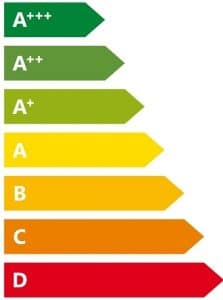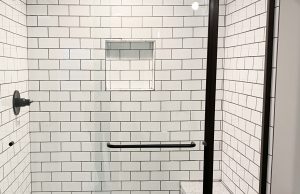Every homeowner knows that time will come when they need to replace their furnace. Furnaces have a life expectancy that ranges from 15 to 20 years. The furnace may still be operational longer than 20 years, but that does not mean that it should continue warming your home. A furnace will lose efficiency every year that they age, which you will notice on your gas bill each month as your furnace approaches its 20th birthday.
The number one sign that it is time to replace a furnace is a sudden and unexpected increase in your utility bill each month. This usually means the furnace is losing efficiency and wasting fuel (and money). However, other reasons may cause your utility bill to increase. These factors will be discussed further in the guide.
When your furnace does eventually break or just becomes too inefficient will you know what to do to replace it? Not many homeowners know enough about replacing a furnace because furnace technology has rapidly developed over the past 20 years. It has developed so much over that past twenty years that different types of fuel sources are used nowadays that were not even in existence twenty years ago.
The following guide will show you five things you need to know before replacing your furnace. Some tips involve what furnace to choose, checking your insulation, and examining your ducts. In total, these tips could save you thousands of dollars in utility bills and needless furnace replacements.
HVAC Repair or replace?
Your furnace may not actually need to replacement. A few factors will determine whether your furnace will need to be repaired or replaced. Age and cost of future repairs are the two most important factors in deciding whether to repair or replace a furnace.
The first thing you should know is the age of your current furnace. It may be cheaper to repair a newer furnace than purchase a completely new system. In general, you should replace a furnace older than fifteen years because furnaces that old have lost a large amount of efficiency. Reduced efficiency leads to higher electric bills and gas bills, usually the number one sign that a furnace needs replacement.
If your furnace is less than fifteen years old, then repairing it will usually make the most sense. This will, of course, depend on the extent of the repair and the inefficiency of the furnace. Performing a simple repair on a relatively new furnace makes perfect financial sense. An expensive repair on an older furnace does not make financial sense, in that case replacing the furnace makes more financial sense. Especially when you factor in how much money you will save on your monthly utility bill just from upgrading to a modern and more efficient furnace.
If you don’t know the age of your furnace, then there is no need to worry. Many homeowners do not know the age of their furnace because it was installed by the previous homeowner or they simply forgot when they last replaced it. Thankfully, finding the age of your furnace is extremely simple in either situation.
All that is required to check the age is a quick glance at the serial number, which can be found on the inside of the removable door or on the fan blade. Look at the first four digits of the serial number, the first two digits of the first four indicate the week of the year that the furnace was built. The last two numbers of the first four numbers indicate the year the furnace was manufactured. For example, a serial number that reads “0599” shows a furnace that was built in the fifth week of 1999.
If you cannot find the serial number, then calling the manufacturer and asking about the furnace is the best option. A representative from the company should know the age of the furnace by looking at the model number or pictures of the furnace.
Overall, finding out the age of the furnace before deciding on replacing it is one of the most important steps. Such a simple step is often overlooked by most homeowners because of a lack of knowledge. This step alone could be the difference between a costly replacement and a relatively inexpensive repair. Make sure to always check the age of your furnace before replacing it.
What type of fuel source does the furnace use?
The type of fuel source your current furnace uses will make a difference in the type of replacement furnace to purchase. Any furnace originally made to burn coal should be replaced. The same applies to furnaces that have a pilot light instead of an electric start and furnaces that are missing vent dampers. Pilot lights can have potentially dangerous consequences if they burn out. Any furnace that is missing vent dampers will automatically fall into the category of a furnace older than twenty years, which is why you should immediately replace it.
If you have a normal, natural gas furnace, then you can simply replace the furnace with another natural gas furnace. However, keep in mind alternate fuel sources exist that may have cheaper sources of heat and operate more efficiently. Some of these alternatives include furnaces that burn wood pellets or oil.
Natural gas furnaces are known for their efficiency and low cost. Both those factors make them the most popular furnace option in America. However, not all areas of the United States have access to natural gas. These areas need to use one of the many alternative fuel sources available on the market to power their furnace.
The most common alternative fuel source for a furnace is oil. Oil furnaces are generally cheaper than natural gas furnaces and can heat more of the home. However, they tend to be more inefficient and require more maintenance. Oil furnaces also require the delivery of oil to the house. This is done by signing a service contract with an oil provider to deliver oil to the home. Oil prices tend to be higher than the equivalent natural gas prices, but market prices can change quickly.
A new alternative fuel source for a furnace is wood pellets. Wood pellet furnaces are more expensive than other types of furnaces however they have some very nice advantages. The wood pellets are much cheaper than oil and natural gas, which offsets the increased cost of wood pellet furnaces. The disadvantages of a wood pellet furnace are that new pellets must be added weekly and the ashes must be cleaned from the furnace. This is in direct contrast to a relatively low maintenance natural gas furnace, which requires zero daily maintenance or upkeep. Wood pellets can be purchased at locations all across North America or they can be delivered straight to the home.
Overall, each fuel system and type of furnace has its own unique advantages and disadvantages. They all do an excellent job at heating a home in the winter. The main difference is a factor of price, maintenance schedule, and efficiency.
Understand efficiency
Every furnace available on the market has its own efficiency rating. Efficiency, in this case, refers to the amount of consumed fuel used for heat vs. lost to other non-heating factors. It is measured as a percentage, so a furnace with an efficiency of 85% will use 85% of burned fuel for heat and lose 15% of the consumed fuel to non-heating factors.
Modern natural gas furnaces tend to have an efficiency that ranges from 90%-98%. Oil and wood pellet furnaces range from 80%-90%. This is quite the increase from furnaces manufactured twenty years prior that had an efficiency that hovered around 70%.
The difference in price between a furnace that has an efficiency of 97% vs. one with 90% could be almost one thousand dollars. Remember, a more efficient furnace will result in lower monthly gas bills, which could save you money in the long term. This is especially true in colder climates where it is common to use a furnace for five months of the year.
Computer programs exist that allow you to easily plug in the efficiency, cost of gas, and estimated use to give you an estimated monthly cost. These programs may be useful when deciding how efficient of a furnace you want to purchase for your home.
Check your whole system
Furnaces are complicated machines and will require a professional for any complicated fixes. However, there are some basic things every homeowner can do before calling a furnace repair contractor.
The first thing to check on the furnace is the air filter. Many homeowners never look at the air filter on their furnace. A clogged air filter could result in the airflow slowing down so much that it barely heats the home. Always check the air filter before deciding to replace your furnace.
Second, check the thermostat on the furnace. Sometimes the thermostat will just stop working, which also causes the furnace to malfunction. Other issues with the thermostat may involve corroded wires or loose connections. Both of those issues will cause the furnace not to function properly. If you have a battery powered thermostat, then try replacing the batteries even if the thermostat still appears to work. Sometimes the battery only has enough power to show the display and not enough to relay this information to the furnace.
Next, check the fuses on your home’s circuit board. If the fuse is tripped, then the furnace will not receive power and will not work. Keep in mind; a tripped fuse is often a sign of other electrical problems. If you constantly replace the fuse, then you should have an electrician look at your wiring.
Checking the duct system is also important if your furnace no longer warms your house. The ducts transfer the heat from your furnace to your rooms. A leaky duct system could cause the heat to never make it to your rooms. Don’t mistake leaky ducts for a furnace in need of replacement.
Finally, if your furnace has a broken or damaged heat exchanger, then you might need a new furnace. However, if you have a newer furnace, then it may be cheaper to have someone repair the furnace. This, of course, depends on the type of furnace, the age of the furnace, and the cost to repair the furnace. No two situations are ever the same.
Overall, a furnace is a massive system with many points of failure. Not all these points of failure will warrant the need for a replacement furnace. Examine the potential breakdown points, and if your furnace still does not work, then you might need a replacement furnace.
Check your insulation
Checking your insulation is the final thing you need to know before replacing a furnace. If your home is not warm, then you should check your insulation before replacing a furnace. It is still wise to check your insulation before replacing a furnace because a new furnace will not solve an insulation issue.
A basic way to check insulation is to look for any wetness. Insulation material will not work when wet and will need to be replaced. Wet insulation is also susceptible to mildew, which could be toxic. This gives two very important reasons for you to change any wet insulation.
Your insulation will also need to be changed if there has been any type of animal infestation in your roof. This could be opossums, rats, or squirrels. All these animals will tear up insulation. If you have ever had an infestation and did not replace your insulation, then you should replace your insulation around the same time you replace your furnace.
Other things to check on insulation include the seals on your home and the thickness of the windows. The seals on your home could be on the roof or on the windows. Any gaps in your home will allow warm air to escape. Some common places for seals to break include under the door and alongside the windows. Sealing every gap is impossible, but you want to eliminate any major holes in your home.
Older windows that are thinner will provide noticeable less insulation that modern windows that tend to be thicker and built with insulation as a priority. So, if you have thin windows from the 1950s, then replacing them with modern windows that provide good insulation may be a smart choice when you replace your furnace.
Never discount the importance that insulation has in keeping a home warm. A little insulation in a home can save thousands during the winter. Insulation also saves money in the summer too in a hot summer (such as the Midwest) because it will keep the cold air indoors.
Final Thoughts
These five things cover everything you need to know before replacing a furnace. The heating system in a home is complex, so the guide delved into everything from the duct system to insulation to the different types of replacement furnaces. The most important thing to know before replacing a furnace is the efficiency of the replacement furnace. The fuel source is also important as that will directly determine the monthly maintenance cost of the new furnace.







